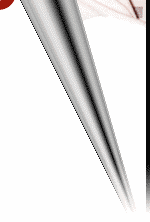|
Okay,
then, we can’t look at each and every accusation in the
flood of charges and counter-charges in the space of a single
column, so let’s look at a typical article: “Road
of death yields up its ghosts,” Right off the bat we
are in a semi-fictional framework: this sounds more like the
title of a novel or a short story than a “news”
article. The leader reads: “Daniel
McGrory in Kosovo is confronted by gruesome evidence of Serb
atrocities.” [Times of London, June 17, 1999].
As it turns out, however, what he is “confronted”
with is pure hearsay.
A
GUN BATTLE OR AN “ATROCITY”?
Kosovars
who returned to the village of Lukare, we are told, found
“gruesome evidence of atrocities.” What evidence?
A farmhouse has been ransacked and partially burned, and “inside
the dining room was the charred corpse of a man wearing wellington
boots. A single rifle cartridge lay beside the body, which
had been wrapped in a lamb’s fleece rug and set alight.”
McGrory cites one Ejup Krasniqi as saying: “The man who
owns this house is in a refugee camp in Macedonia, so we have
no idea who this is.” Now what are we to make of this?
Who was this man? What was he doing in someone else’s
house? Might he have been a KLA fighter? It certainly seems
possible, given his taste in footwear. What kind of a phony
“atrocity” is this? It could just as easily
have been a gun battle, or a looter summarily executed (which,
admittedly, some might deem an atrocity). The point is, however,
that this is far from clear-cut. Where oh where is this “gruesome
evidence”?
SACRILEGE
Atrocity
stories are all written in an overwrought, melodramatic style:
the idea is not so much to state facts as to construct a narrative,
complete with a plot, characters major and minor, and those
signature touches that add color and enthrall the critics.
McGrory’s own literary flourishes come under the heading
of unintentional humor. At the end of his paragraph on the
mysterious man in the Wellington boots, he adds: “Before
they left, the executioners put a final shot through the television
screen.” Oh no, not that – not, gasp, the
television screen! While the Serbs complain that thirty
Orthodox churches have been put to the torch by the KLA, and
the holy relics of their most sacred shrines violated, what
outrages the limey press is this sacrilege against a TV set,
the holy altar of Western culture.
CONSIDER
THE SOURCE
As
we get deeper into the piece, it becomes all too clear that
McGrory is being given a “war crimes” guided tour
by the KLA: “On a tray in a hilltop farmhouse –
the makeshift headquarters of the KLA – is an assortment
of identity cards from the dead.” The Serbs supposedly
recovered these from a “mass grave” of 77 Kosovars
allegedly massacred. But who knows where these cards really
came from? Are we supposed to take the KLA’s word for
it?
A
REAL WHOPPER
There
are many suspicious aspects to this story: the forensic evidence,
we are told, in many cases has been “tainted,” evidence
such as shell cases “taken as souvenirs.” Oh, really:
by whom? The paragraph ends with a real whopper: “And
vital witnesses are too scared to testify.” This sentence
seems almost incomprehensible, until you really begin to think
about it: after all, with the Serbs gone, witnesses to Serb
atrocities would have nothing to lose and everything to gain
(including some kind of material reward) by testifying about
these alleged acts of brutality. Just who or what are they
afraid of? The obvious answer is, of course, the KLA. Who
else is anybody afraid of in Kosovo these days?
VENGEANCE
IN VICTORY
Not
all the Kosovars supported the KLA: some were loyalists, who
supported the idea of a multinational Yugoslav federation,
others tried to remain neutral. These the KLA consider enemies,
and they have gone after alleged “collaborators”
and executed them on the spot. This was one reason why they
rushed into Kosovo, ahead of the NATO invasion force: to exact
vengeance on their enemies, to settle old scores and consolidate
their reign of terror. Who knows how many they executed, before
NATO troops were finally given the order to move? We will
never know.
TRUST,
AND VERIFY
A
good deal of the Times piece is based on the testimony
of Albanian Kosovars, virtually all of it in the form of flat-out
assertions, which McGrory reports uncritically, as if it were
fact. A woman called Zarife (no last name) accuses Serb soldiers
of using what used to be her home as a “rape camp.”
The evidence: bloodstained mattresses and piles of women’s
underwear. Zarife has spent all day cleaning up the mess (more
“evidence” tainted). We are told another story of
an ambush, in which all the men were separated out and forced
to march along a bridge and face the waters: “When they
were looking away,” says Mr. Krasniqi, “they were
stabbed in the back of the neck by about 20 soldiers.”
Stabbed in the back of the neck? Isn’t that a rather
unusual – and problematic – way to execute someone?
“It took them nearly an hour to kill everybody and we
were too afraid to help.” Krasniqi’s story just
does not make any sense: are we supposed to believe that 50
men passively stood on a bridge for an hour while they
were slowly stabbed to death? This is not reporting, it is
stenography. It isn’t until the fifteenth paragraph of
this article that the author writes “such claims are
impossible to verify.” The British are so terribly understated,
don’t you think?
THE
ROAD OF MALARKEY
“It
is inevitable that larger massacres will be discovered in
the coming days, “ writes McGrory, with what seems like
far too much relish. Besides, why is it inevitable?
Certainly it is not inevitable unless the assumption
is that the Serbs are guilty in advance. “The survivors
of the killing on the Lukare to Koliq road hope that what
happened here will not be forgotten.” But what did
happen on the so-called Road of Death? Even a mildly critical
look behind the headlines suggests that there is much less
here than meets the eye.
NEITHER
ANGELS NOR DEVILS
This
is not to suggest that the Serbs are angels: but neither are
they devils, or “Milosevic’s willing executioners,”
as one KLA spokesman – yet another Krasniqi! – put
it in a recent television interview. This is a phrase you
could tell he was quite proud of, having picked it up from
the Susan Sontag-New Republic wing of the War Party
– the amen-corner of the KLA in this country. It is an
odious phrase, meant to stigmatize an entire people. There
is already talk of “arresting” Slobodan Milosevic
and others in his government indicted by the phony War Crimes
Tribunal, which has been nothing but a kangaroo court from
the very beginning. How else would they arrest him without
invading Serbia proper?
PHASE
II COMING UP
This
is what is on the agenda now, with the Brits – as usual
– leading the push to war, and the Germans unleashing
their KLA clients to wreak havoc on the ground and provoke
the Serbs into a fight. This is the real story behind the
headlines, the function of atrocity stories in this war: to
dehumanize and justify the annihilation of the Serbian nation.
The NATO-crats won’t be happy until they have marched
into Belgrade, set up a puppet government, and proceeded to
put virtually the entire population on trial for “war
crimes.” NATO’s war against Serbia is far from over:
phase II is coming right up.
Note
to readers: Due to a technical problem, a partial version
of this column was posted earlier. We apologize for any confusion
or inconvenience.
|








